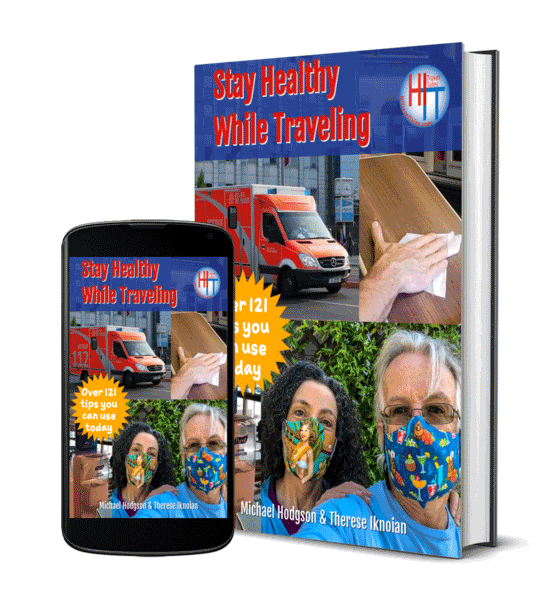Alright, let’s talk about keeping yourself in one piece when you’re out in the middle of nowhere. I’ve done a fair bit of wandering into remote spots, and trust me, getting sick when you’re miles from decent help is no joke. So, I’ve got a bit of a system I follow, learned mostly the hard way, you know?

Before I Even Think About Packing My Rucksack
This is where the real work starts, long before I’m wrestling with zippers. Preparation is everything, I reckon.
- First up, I hit the books, or well, the internet these days. I dig into where I’m actually going. What’s the local score on health? Are there specific bugs or diseases common there? What’s the water situation like? Can you even find a doctor if things go south? I try to get a real picture.
- Then, it’s a trip to my own doctor. This isn’t optional for me. I lay out my plans, tell ’em exactly where I’m off to. We talk about vaccinations – yellow fever, typhoid, hepatitis, whatever’s recommended. I remember one trip to a pretty isolated part of South America, the doc made sure I was covered for a few things I hadn’t even thought of.
- I get my prescriptions sorted. If I’m on any regular medication, I make sure I have more than enough to last the whole trip, plus a bit extra for delays. I also ask for a small supply of general stuff – strong painkillers, maybe some antibiotics if the doc thinks it’s wise for the region, and definitely something for an upset stomach. You know the kind.
- My first-aid kit is my baby. I don’t just grab a pre-made one from the shop. Nah, I build my own. I start with the basics: plasters of all sizes, antiseptic wipes, sterile gauze, medical tape. Then I add in things like blister plasters (a lifesaver!), rehydration salts (critical if you get a bad stomach bug), antihistamines, and a good painkiller. I tailor it a bit depending on where I’m going. If it’s jungle, more insect stuff. If it’s mountains, stuff for altitude.
- I always check my travel insurance. Sounds boring, but if you break a leg in a remote valley, you’ll want to know you’re covered for evacuation. Some policies have weird exclusions for remote or “adventurous” travel, so I read the fine print.
When I’m Actually Out There, Living It
So, I’ve arrived. The adventure’s begun. This is when I need to be switched on, even when I’m knackered from a long bus ride or something.
- Water. This is a big one for me. My rule is simple: if I’m not 100% sure it’s safe, I don’t drink it straight from the tap. Sealed bottled water is my first choice. If that’s not around, I boil water if I can, or use a good quality water filter I carry. I’ve been caught out before, many years ago, and spent a very uncomfortable few days. Lesson learned.
- Food’s another area where I’m careful, but not paranoid. I love trying local grub, that’s half the fun. But I use my eyes and nose. Does it look fresh? Is the place busy with locals (usually a good sign)? Street food is often fine, especially if it’s cooked right in front of you, piping hot. “Peel it, boil it, cook it, or forget it” is a decent mantra for fruit and veg.
- Bugs. Mosquitoes, ticks, flies – they can ruin a trip or worse. I always pack a strong insect repellent with DEET, especially for tropical places. I use it generously, particularly at dawn and dusk when mozzies are most active. If I’m sleeping in basic places, a mosquito net treated with permethrin comes with me.
- Keeping clean is basic but vital. I wash my hands with soap and water whenever I can, especially before eating. If that’s not possible, I’ve always got a bottle of hand sanitizer gel in my pocket. It’s amazing how much difference this simple thing can make.
- I try to listen to what my body’s telling me. It’s tempting to push hard, see everything, do everything. But if I’m feeling overly tired, or if the altitude is getting to me, I slow down. Getting run down is when you’re most likely to pick something up.
- Sometimes, I’ll ask local folks I trust. If there’s a particular local concern, or if I’m unsure about something, a quiet word with a guesthouse owner or a local guide can be really helpful.
Once I’m Back on Home Turf
The trip might be over, but I’m still a bit watchful for a week or two.
- If I felt unwell on the trip, or if I get any weird symptoms after returning – fever, rash, persistent stomach issues – I’m straight back to my doctor. And I make sure to tell them exactly where I’ve been. Some illnesses can take a while to show up.
- I usually have a quick think about what went well and what I could do better next time. Did my first-aid kit have everything I needed? Was my water purification method easy enough? Little tweaks for the next adventure.
So, that’s my approach, more or less. It’s not about being scared; it’s about being smart so you can actually enjoy these incredible, off-the-beaten-path places. A bit of planning and staying aware means I spend my trips exploring, not holed up feeling miserable. And that’s the whole point, isn’t it?









